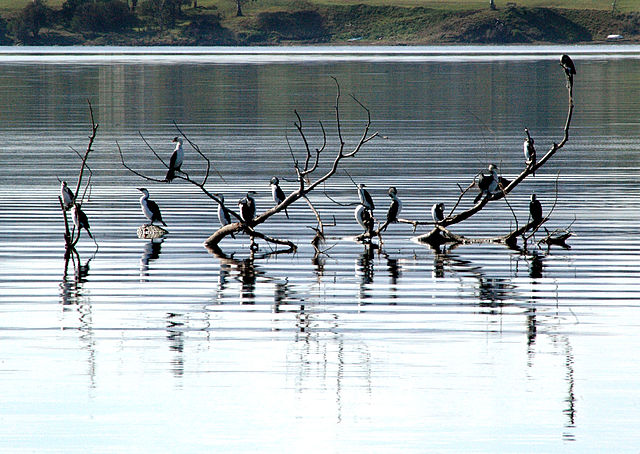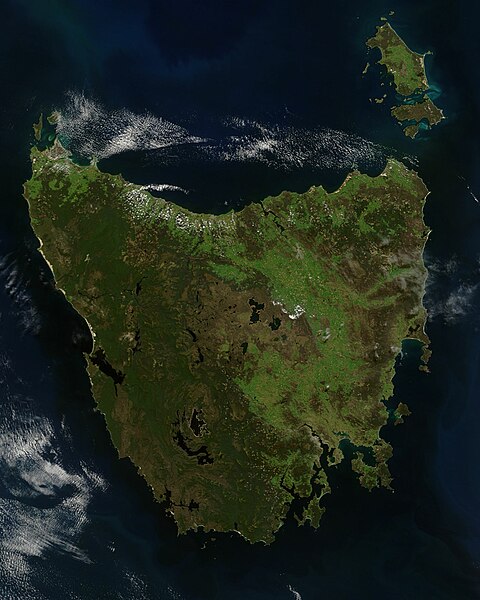The River Derwent, also known as timtumili minanya in palawa kani, is a significant river and tidal estuary in Tasmania, Australia. It begins its journey as a freshwater river in the Central Highlands at Lake St Clair, descending over 700 metres (2,300 ft) across a distance of more than 200 kilometres (120 mi). At the settlement of New Norfolk in the Derwent Valley its waters become brackish, flowing through Hobart, the capital city of Tasmania, its seawater estuary eventually empties into Storm Bay and the Tasman Sea.
Sunrise over the River Derwent
Little pied cormorants on the River Derwent
The critically endangered spotted handfish
The River Derwent (facing south), at the Bridgewater causeway
Tasmania is an island state of Australia. It is located 240 kilometres (150 miles) to the south of the Australian mainland, separated from it by the Bass Strait, with the archipelago containing the southernmost point of the country. The state encompasses the main island of Tasmania, the 26th-largest island in the world, and the surrounding 1000 islands. It is Australia's least populous state, with 569,825 residents as of December 2021. The state capital and largest city is Hobart, with around 40 percent of the population living in the Greater Hobart area. Tasmania is the most decentralised state in Australia, with the lowest proportion of its residents living within its capital city.
Tasmania from space
Tessellated pavement, a rare rock formation on the Tasman Peninsula
1807 engraving by French explorer Charles Alexandre Lesueur shows seafaring Aboriginal people and a large canoe on the eastern shore of Schouten Island.
Tasmania is named after Dutch explorer Abel Tasman, the first European to sight the island, in 1642.








